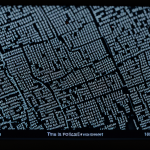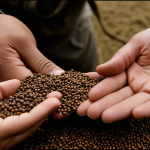The Role of Community Radio Stations in Rural Health Education
Community radio stations play a significant role in enhancing rural health education through their vast reach and accessibility in remote areas. With limited infrastructure and resources, these stations are often the primary source of health information dissemination for many rural communities. Unlike other media channels, community radio can broadcast messages in local languages, ensuring that health education is culturally relevant and easily understood by diverse populations.
The importance of culturally relevant health messaging cannot be overstated. It bridges the gap between health professionals and communities by using familiar language and cultural references. Community radio impact is evident in numerous successful projects where tailored health information has led to increased awareness and behavioural changes among listeners.
Also to see : Enhance Your Immune System: Pioneering Innovations for a Healthier Tomorrow
Case studies highlight the effectiveness of community radios in improving rural health education, showcasing projects that have made significant strides in addressing issues such as maternal health, hygiene, and disease prevention. For instance, a radio initiative in a rural village successfully reduced waterborne diseases by airing programmes on safe water practices, which were integrated into the daily routines of the community. These examples underscore the pivotal role community radio plays in transforming health education and improving outcomes in rural settings.
Innovative Methods Used by Community Radio Stations
Community radio stations employ innovative health communication strategies to make their programs more engaging and effective in spreading health information. Among the most successful techniques are call-ins, surveys, and feedback loops, which foster an interactive platform for listeners. Such engagement strategies not only increase audience participation but also allow stations to tailor content based on real-time public interaction.
Also to see : Transform Your Weight Loss Journey with Powerful Mindful Eating Strategies
Collaboration with local health workers is crucial for creating content that resonates with the community. By partnering with these professionals, community radio can ensure that the information broadcasted is accurate, relevant, and culturally sensitive. This collaboration enhances the credibility of the programs and ensures that the listeners receive practical advice directly applicable to their daily lives.
Radio health programs also leverage storytelling and local languages, making complex health topics more relatable and easier to understand. Storytelling is a powerful tool that aids in memory retention, ensuring that health messages are both impactful and long-lasting. Broadcasting in local languages ensures inclusivity, as it removes language barriers and encourages broader audience involvement. In this way, community radio stations effectively bridge the gap between knowledge and action, significantly contributing to rural health education.
Challenges in Delivering Health Education through Community Radio
Delivering health education through community radio in rural areas faces several challenges. A significant barrier is the lack of infrastructure and technical resources which limits the radio stations’ ability to broadcast effectively over large areas. Many rural regions have minimal access to electricity and stable radio frequencies, which hampers consistent communication.
Language diversity presents additional obstacles. While broadcasting in local languages connects more effectively with listeners, it requires linguistic expertise and resources, often limited in community radio settings. Additionally, cultural differences can sometimes impede the transmission of health messages, necessitating careful tailoring to ensure the messaging resonates and is respected in diverse social norms.
Community engagement is crucial for overcoming these challenges. Establishing a strong presence by involving local leaders and utilizing personal networks can bridge the gap between radio stations and listeners. However, mobilizing local involvement requires time, effort, and financial support, which are frequently in short supply for community radios.
Creative strategies like community radio clubs and listener groups help address these challenges by fostering an active audience that can contribute feedback and suggest improvements, ensuring health information remains relevant. These clubs also serve as a platform for dialogue, allowing stations to refine their approach in addressing rural health education barriers.
Successful Case Studies of Community Radio Initiatives
Delving into case studies in rural health reveals the power and effectiveness of community radio in executing successful health campaigns. These initiatives have significantly enhanced radio education effectiveness, bridging gaps in health knowledge and fostering prevention strategies.
A noteworthy example is a campaign targeting maternal health, where tailored radio messages improved prenatal care awareness. The initiative led to an increase in hospital births and antenatal visits, underscoring the potential impact of well-structured radio programs. Detailed testimonials from both community members and health practitioners highlight the reach and acceptance of such endeavours.
In terms of quantitative success, one campaign against malaria reported a significant decrease in incidence rates. By focusing on the distribution of preventative measures like bed nets, crucial information reached thousands, transforming behaviours and saving lives.
The successful health campaigns discussed are backed by statistical data, affirming improvements in health linked to these community radio initiatives. Importantly, these campaigns build on the trust and familiarity established within communities, ensuring that the critical information disseminated is received, understood, and acted upon appropriately.
Strategies for Effective Outreach in Rural Communities
Community engagement strategies are central to achieving successful health education in rural areas. By building partnerships with local organizations and health agencies, community radio stations can expand their reach and integrate feedback systems. Such collaborations enhance trust in health information and ensure messages are contextually relevant.
Outreach methods benefit tremendously from incorporating digital tools alongside traditional radio broadcasts. Social media platforms, SMS services, and local apps can supplement radio programs, offering new channels for disseminating health information. These tools enable targeted messaging and provide opportunities for real-time interaction, expanding the impact of radio efforts.
Ensuring participatory health education is crucial for maintaining listener interest and relevance. Encouraging local participation in content creation not only enhances program engagement but also ensures the content reflects the community’s specific health needs. This involvement fosters a sense of ownership and empowerment among rural populations.
Strategies such as hosting community events, facilitating face-to-face interactions, and providing platforms for listener feedback contribute to sustained audience engagement. By nurturing an interactive and collaborative environment, community radio stations ensure that their education initiatives remain dynamic, culturally attuned, and capable of tackling the unique health challenges faced by rural communities.
The Importance of Accessibility and Interactivity
Accessible health education is crucial in rural settings where traditional media often falls short. By embracing interactive radio programs, community stations bridge this gap, enhancing audience participation in health dialogues. When radio content is accessible, it transforms passive listening into active engagement, fostering a more informed community.
Interactive formats, such as live call-ins or Q&A sessions, are highly effective. They allow listeners to clarify doubts and actively contribute to discussions, thereby improving the dissemination of health information. Programs that encourage listeners to share experiences and insights not only validate personal narratives but also enhance communal learning.
The success of tailored content lies in addressing diverse community needs. For instance, adapting complex medical terminologies into digestible content suits varied educational backgrounds. By mixing local dialects and culturally relevant examples, radio stations ensure inclusivity and respect for local norms.
Examples of engaging formats include health storytelling or scenario-based discussions, which help people relate complex subjects to their daily lives. Community feedback further refines these programs, ensuring ongoing relevance and increasing radio education effectiveness. Thus, accessibility and interaction serve as powerful tools in expanding the reach and impact of community radio in rural health education.



